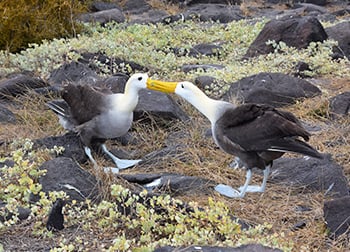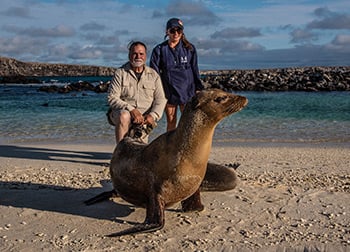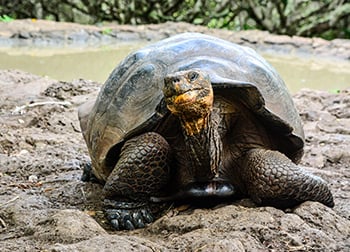What should I know before traveling to the Galapagos?
What should I know before traveling to the Galapagos?
Galapagos Islands Information
For centuries, the Galapagos Islands have been an inspiration. Everything about these islands is truly extraordinary, from their “rising from the sea depths” inception to the incredible diversity of flora and fauna. They prompted the “Father of Evolution,” Charles Darwin, to have his eureka moment, developing his theory of natural selection in 1835 based on his visit to the archipelago. It shouldn’t come as a surprise, then, that they continue to enchant people to this day.
Luckily, the Ecuadorian government recognized the islands’ value and founded the Galapagos National Park (GNP) in 1959. Since then, the Galapagos sea lions have flirted with tourists from all over the world, the Galapagos giant tortoises have awed visitors, and the archipelago has gained a growing number of passionate advocates all around the world. (Regardless of when they decide to travel to the Galapagos, around 160,000 tourists visit this destination annually.)
The Galapagos Islands are so unique because a) they were formed through volcanic activity and are still continuously changing, and b.) you can visit them. They were also never joined to the mainland, which means that the flora and fauna that made their way to the archipelago by chance were able to evolve over time in this unique environment without interference from predators. Hence, an entirely new world was created away from prying eyes.
Visitors to the Galapagos have a completely exclusive, awe-inspiring experience where animals not only roam the islands freely, but also reign supreme. We, as humans, have the privilege of observing these iconic Galapagos species in their habitat when we venture into the National Park, (as it truly is the best way to see the Galapagos); always in the company of certified naturalists guides, as per Park rules.
Where are the Galapagos Islands located?
The location of the Galapagos Islands is one of the reasons why it is so rich in biodiversity. Firstly, it enjoys warm weather year-round, as it quite literally hugs the equator. It is also about 620 miles (1,000 kilometers) from the South American continent, which minimizes the effects of human impact. Finally, the islands are situated right at the crossroads of three primary ocean currents. The cold Humboldt current, the warm Panama Current, and the deep-sea Cromwell Current merge at the archipelago, creating an upwelling of ocean floor nutrients. This is what causes the enormous amount of marine biodiversity and, while snorkeling, you can observe many shark species, a vast variety of colorful fish, penguins, marine mammals, and, of course, sea turtles.
What animals can I see in the Galapagos Islands?
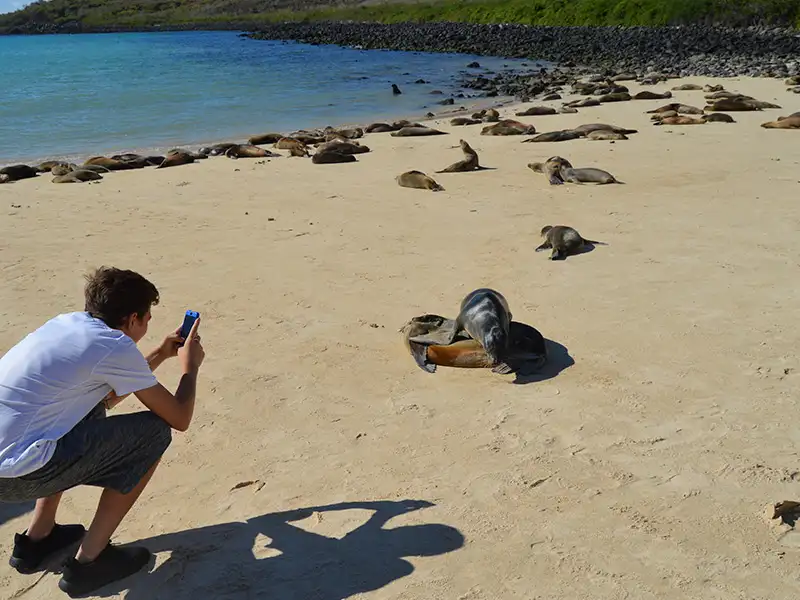
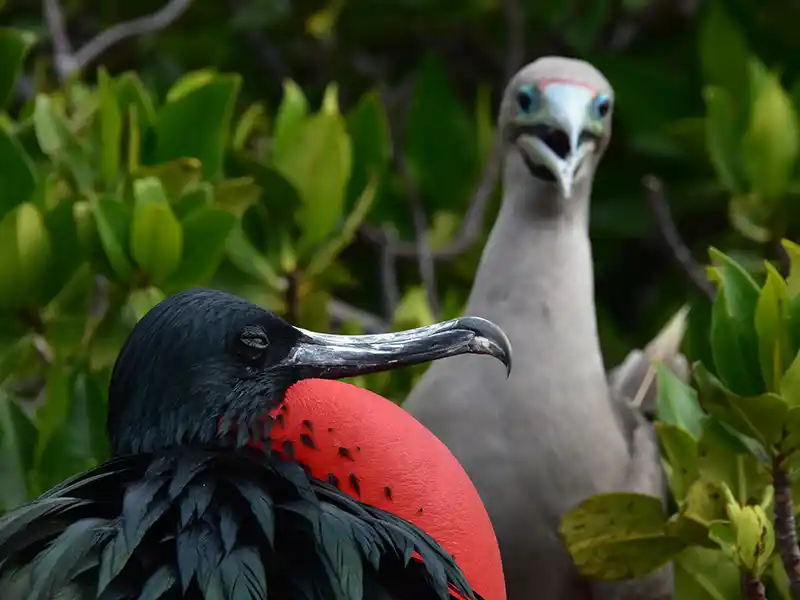
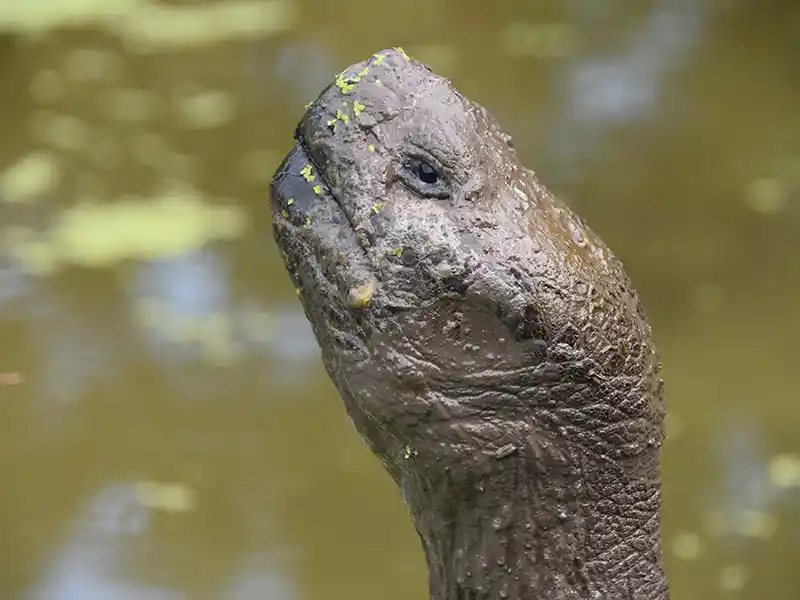
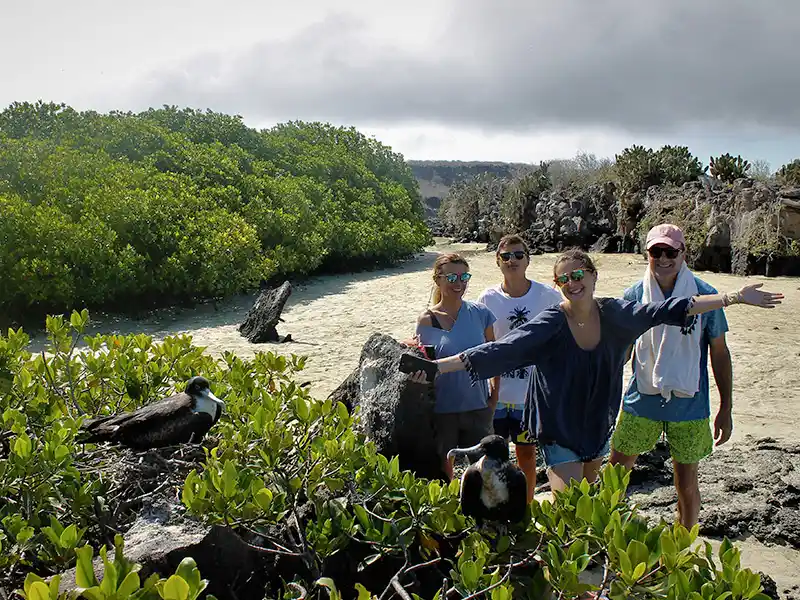
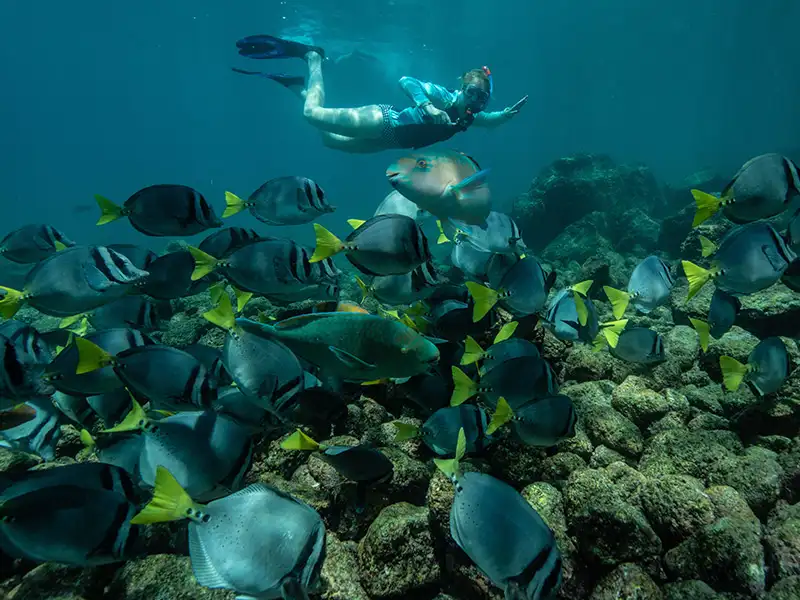
What makes the Galapagos Islands so unique?
The reptiles and marine birds that arrived on the islands had to adapt to survive as the Galapagos Islands are wholly isolated from other landmasses, and the food sources on the islands are completely unique. Free from the confines of predation, fauna could naturally select for characteristics over millions of years that would allow them to find food more easily, but would have impeded their ability to escape from predators if they were anywhere else in the world.
This led to a truly unique archipelago, filled to the brim with extraordinary endemic species that have adapted to an alien world. Visitors to the Galapagos can witness the land iguanas chew on their favorite food, the prickly pear cactus. Just a few feet away, the camouflaged black marine iguanas can be seen sunning themselves on the blackened volcanic rocks. The marine iguanas are actually evolved distant relatives of the land iguanas, and, through the process of natural selection, have developed the ability to swim for their food. Not only that, but they also have the unique ability to recognize the alarm calls of mockingbirds and run for safety. This is the only recorded instance of a non-vocal species reacting to another species’ vocal call.
As well as the marine iguana, the Santa Fe iguana has emerged as a highly-specific endemic land iguana that only lives on Santa Fe Island. Its larger and paler body fits perfectly into the island’s landscape and terrain. And just think – this is only one genus of many peculiar and wonderful flora and fauna found in the Galapagos archipelago!
Tortoises have grown larger than life, weighing over 500 lbs (227 kg). Finches have adapted to their favorite food sources, whether nuts, berries, or cactus flesh. Even the flora plays along! While cacti have adapted to their specific environments, the scalesia tree, which is part of the same family as the tine popular daisy, can reach up to 30 feet (10 meters).
Here are some incredible statistics of just how amazing the Galapagos flora and fauna are:
- 30% of all plant species are endemic
- 20 out of 22 reptile species are endemic
- 24 out of 29 land bird species are endemic
In every Galapagos tour, no matter what island you are visiting or if you choose to explore the archipelago by sea or on land, every inch of this paradise holds a new marvel to behold. Incredible expedition cruises like those offered by Galapagos Yacht La Pinta take you to so many different Galapagos Islands points of interest where you can observe the wonderful world that Charles Darwin witnessed so many years ago. Not only that, when you take an expedition cruise you’ll answer the question of where to stay in the Galapagos. Plus, exploring the archipelago demonstrates just how every cell and living being is connected throughout these fascinating ecosystems.
Why are the Galapagos Islands protected?
Following their initial discovery in the 1500s, the Galapagos Islands were not known for being very hospitable to humans. Yet, man was not easily deterred from visiting this place. This was especially the case during the stretch of months between June and December, in particular, when the Humboldt Current carries nutrients from Antarctica all the way north, directly to the Galapagos Islands, drawing huge schools of fish and cetaceans, which whales would then follow. Early on, there were whalers that caught onto how this current provoked so much interest in sea life. Theses whaling ships often followed the whales to the Galapagos. Their crew earned huge sums of money as they sold whale oil to ever-growing cities in North America and Europe. The money drew more and more men to the archipelago and this slippery fountain of whale oil gold.
In the 17th century, the Galapagos Islands quickly transformed from a bubbling paradise to a broken and destroyed wasteland. This, because of the whalers that cut down thousands of trees to burn whale fat and hunted the easiest targets, often, giant tortoises. Invasive species that hitched aboard their same ships ate the young and the eggs of the endemic species and caused erosion on many of the islands. The effect was so complete that by 1960 there were only 200 adult tortoises on Pinzón Island and 14 on Española.
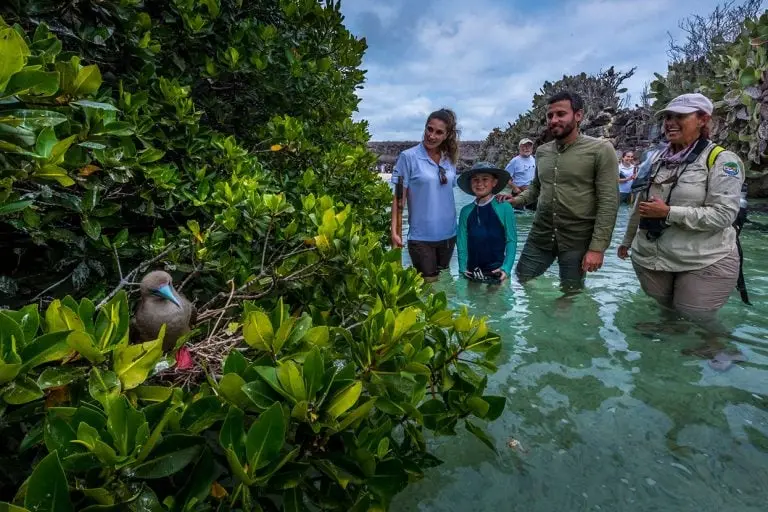
Encounters with Galapagos fauna are pretty common during your Galapagos tours! This is why we make efforts to conserve the Galapagos Islands.
Despite all of the damage done, the Ecuadorian government took on the huge project of creating the Galapagos National Park in 1959. Slowly, all of the invasive species were captured and the islands began to recover their original glory. However, it is a work in progress. Fortunately, restorative projects are at different stages all over the islands, creating the biggest conservancy project in the history of mankind! And the hard work has paid off. From 14 tortoises on Española 60 years ago, there are now more than 1,700!
Much of this work is funded through Galapagos Islands tourism. Expedition tours show off this paradise to visitors traveling to Galapagos from all around the world while the National Park continues its work to protect every plant and animal species. And, when asking yourself, why you should visit the archipelago, or what can you do in the Galapagos, you should know that this place is not just about scientific- and nature-based experiences, there are plenty of activities, too. Here, the GNP regulates numerous ways of experiencing the islands. Fortunately, these are really fun and entertaining things like swimming, hiking, kayaking, paddleboarding, and more! And Yacht La Pinta, for instance, offers each of these activities to their guests.
Why is the Galapagos Islands' wildlife unique?
The purest interaction that humans can have with animals is to experience a true connection with them in their own environment. Imagine visiting endemic species outside of the zoo and in their original habitat. Imagine this animal not being afraid of you, but just showing pure curiosity towards you. It’s nearly unfathomable, but that is precisely why the Galapagos Island wildlife is unique.
Luckily, the whalers’ actions didn’t have a detrimental effect on the attitude of the wildlife towards humans. And you’ll experience this as you walk over the otherworldly terrain on the many protected islands. You’ll find that there is peaceful respect between animals and humans. The male frigates won’t be disturbed as you step by them while they call out to their potential mate in the sky, their enormous red throat pouch bulging with every squawk. Male blue-footed boobies even seem to enjoy the attention as they do their popular mating ritual in an effort to win the interest of a female.
The main problem when visiting the Galapagos Islands is ensuring that you don’t trip over a quietly nesting bird or run into a statuesque land iguana. And that’s exactly how the Galapagos National Park wants it. Local authorities go to great lengths to ensure that guests enjoy their adventure and truly experience the magic of the islands while making sure the flora and fauna are not in any way disturbed by the presence of humans.
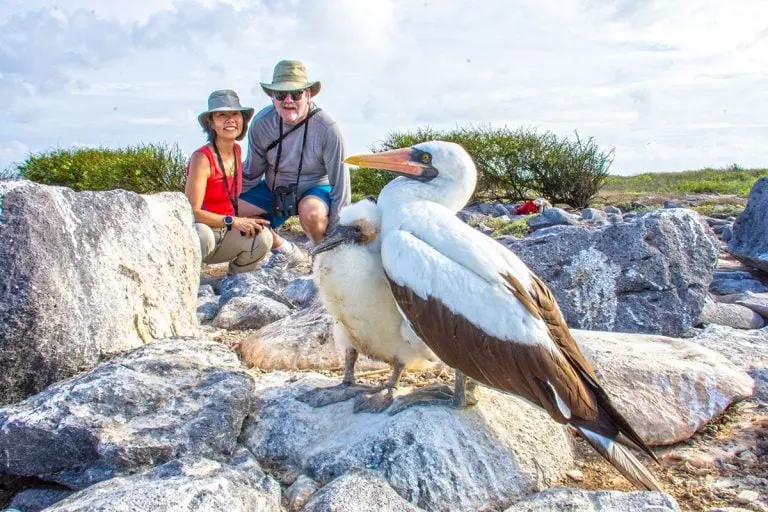
Though animals in the Galapagos aren’t disturbed by human presence, you should always keep a distance with wildlife.
Which Galapagos Islands should I visit?
This scattered archipelago covers a vast 17,000 square miles (45,000 square kilometers) that cross the equatorial line. Although there are officially 19 islands as well as many islets and rocks according to the Galapagos Island National Park, this number is still changing. The islands were originally formed by volcanic activity- either by eruptions, lava flow, or uplifts from the ocean floor. In fact, in the last 200 years, there have been over 50 eruptions in the Galapagos Islands where some have threatened island life, and others have revealed new land. Each island has a unique formation and terrain, and is inhabited by a mismatched combination of unrivaled species.
As well as the incredible fauna, the flora on each island is also unique. Scientists have identified three major vegetation zones: the coastal zone, the arid zone, and the humid highlands. Each island produces a variety of flora depending on its location and altitude.
The Galapagos Islands are a fragile paradise that must be protected in every way possible. Therefore, over 97% of the islands are National Park, and only certain islands have been cleared to be visited. Even then, there are strict guidelines that must be followed by everyone. Each ship must not be over a predetermined size, and must have a National Park-certified guide to lead any excursion. The size of the group cannot exceed 16 explorers. Though, some vessels, like Yacht La Pinta, average far fewer explorers (around 12) per excursion.
Because of these careful conservation efforts, guests can enjoy a world straight out of a Dr. Seuss’ book. The black volcanic rock carves through some islands while others are covered in greenery, red dirt, and surrounded by turquoise waters. No two islands are the same, meaning that a cruise through this archipelago is full of surprises.
The islands that can be visited are:
- Bartolome Island
- Española Island
- Fernandina Island
- Genovesa Island
- Isabela Island
- North Seymour Island
- Santiago Island
- South Plaza Island
- Santa Fe
- Floreana Island
- San Cristobal
- Santa Cruz Island
- Sombrero Chino Island
- Rabida Island
Although some islands are fiercely protected and do not allow visitors in order to safeguard their endemic Galapagos species, there are fourteen islands that we can explore as part of various Galapagos cruise itineraries. You’ll be pleased to know that each one of the accessible islands is included in at least one of Yacht La Pinta’s itineraries. Which one will you choose?
What is the best way to visit the Galapagos Islands?
COMBINED GALAPAGOS ITINERARIES
How about an even more adventurous journey? Each of our itineraries has been specifically planned out, but we understand the need for a little flexibility. That’s why we offer combined Galapagos itineraries. Contact us today to find out how easy getting to the Galapagos can be, and just how Yacht La Pinta can make all your Galapagos dreams come true!
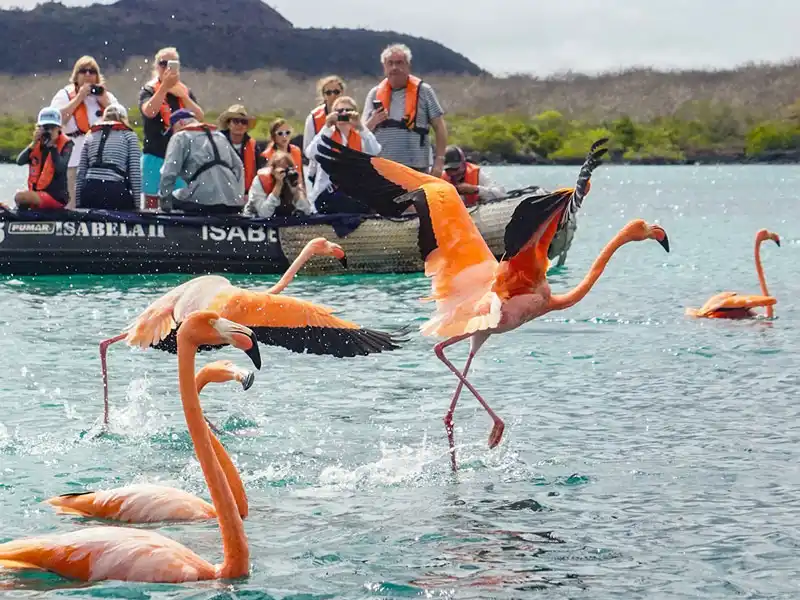
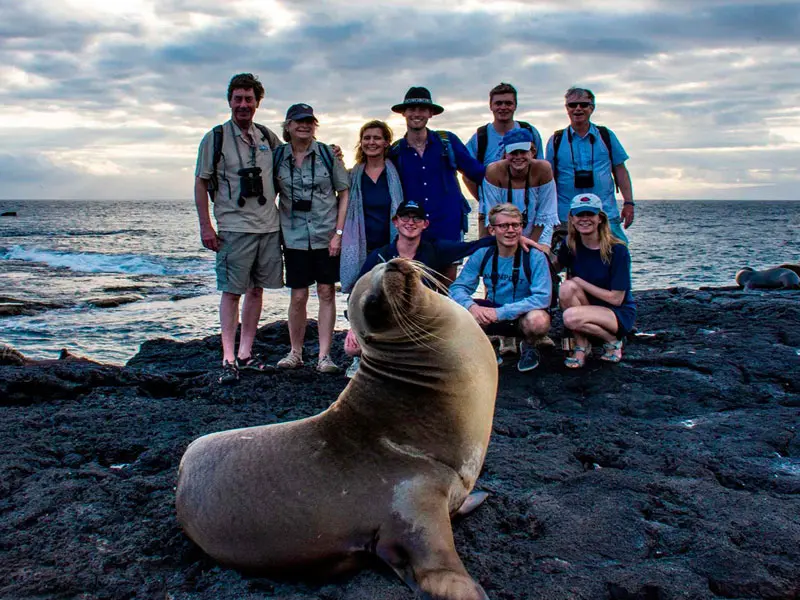
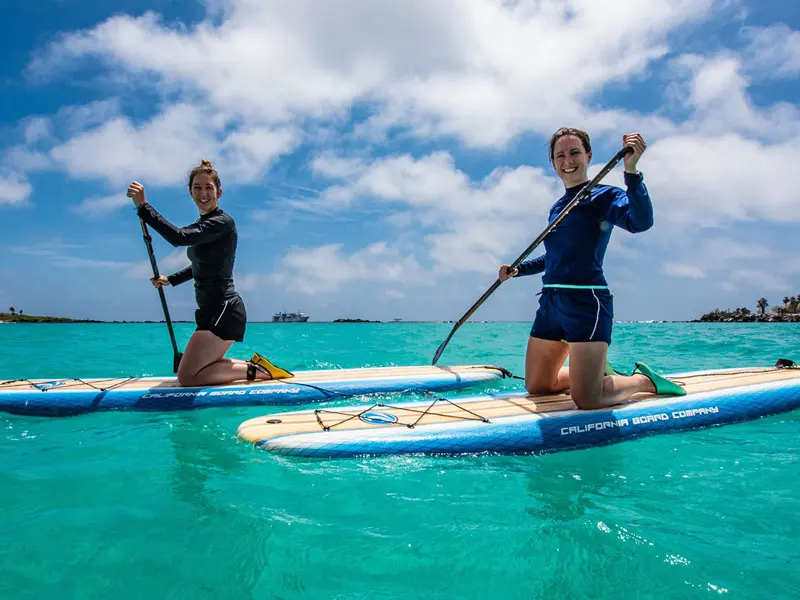
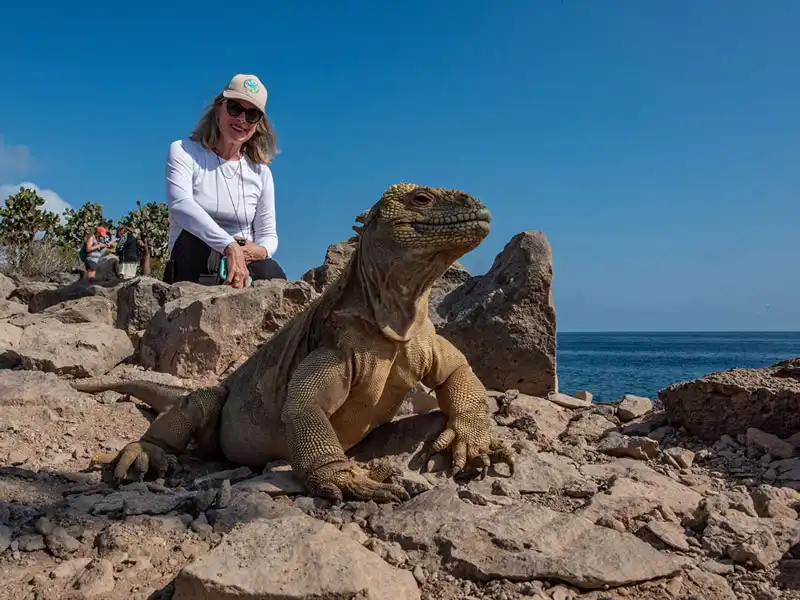
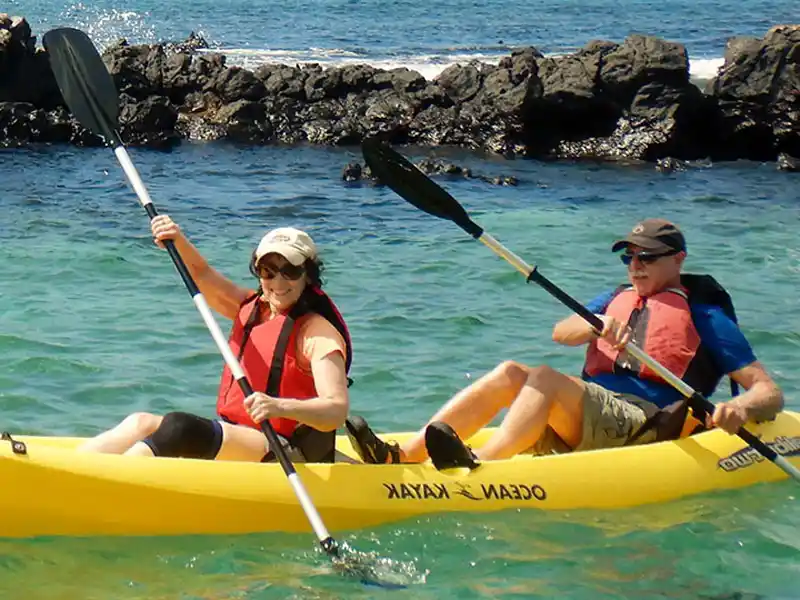
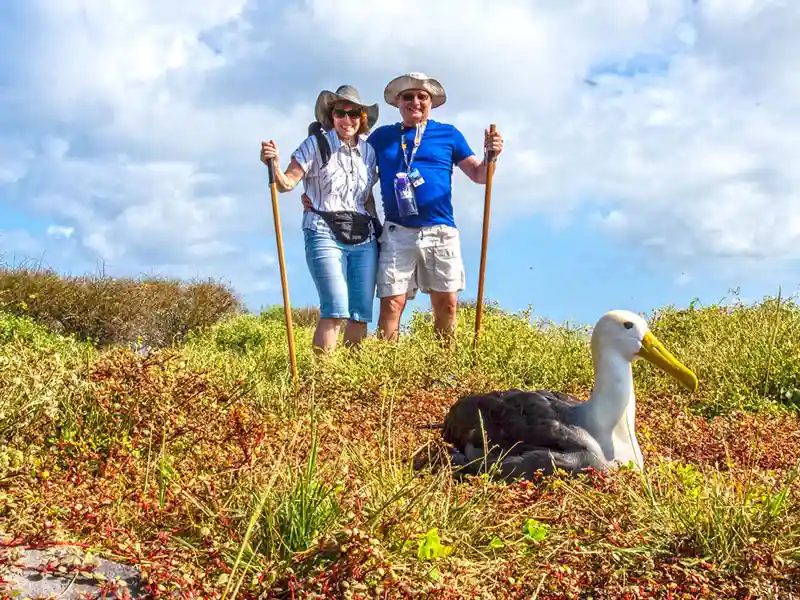
La Pinta’s expeditions travel to every accessible island in the Galapagos archipelago, and each itinerary has been carefully planned to guarantee that every guest onboard will experience the Enchanted Islands in a satisfying way. The extraordinary location and history of the archipelago mean that every island is teeming with unique flora and fauna and incredible landscapes. Make sure you have the chance to encounter all of the iconic BIG15 animal species and enjoy every second of your Galapagos adventure. Let Yacht La Pinta take you on the journey of a lifetime with a combination of land and water activities, premium accommodation and dining, and the very best service offered in the Galapagos.
